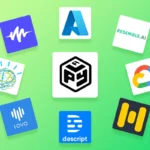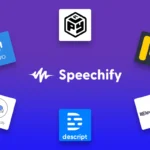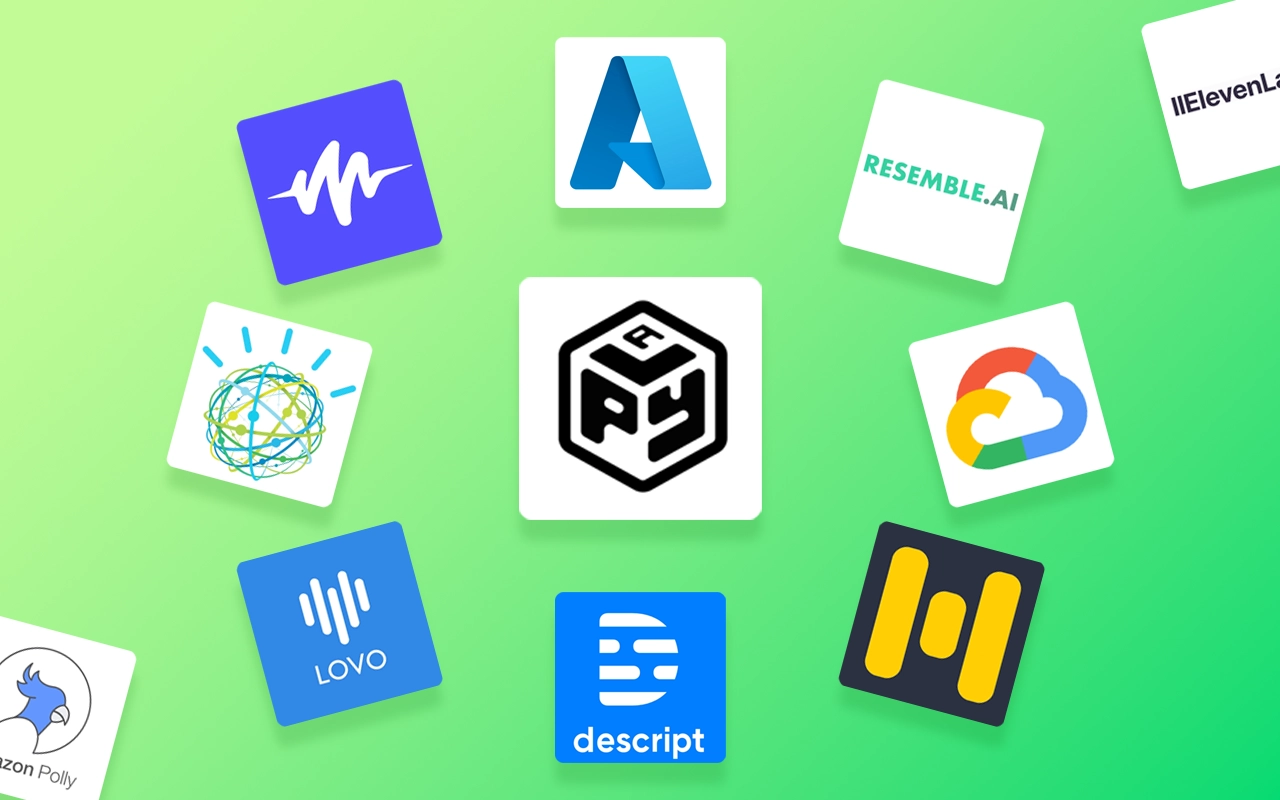Azure Text to Speech API: A Clear Guide. Everything to get you started with Azure Text to Speech API

Low latency, highest quality text to speech API
Table of Contents
After having explored various text to speech APIs, Azure’s Text to Speech API has certainly caught my attention. Though I am biased toward PlayHT’s API, Azure does warrant a mention here.
If you’re seeking a thorough overview and assessment of Azure’s TTS API, you’ve come to the right place. Today, I’ll delve into everything you need to know about Azure’s TTS (one of best text to Speech API. Additionally, I’ll unveil my verdict on the ultimate text to speech API platform. Could Azure be the frontrunner?
Keep reading to uncover the answer.
What is Azure Text to Speech API?
Microsoft Azure Text to Speech API is a part of Microsoft’s Cognitive Services, designed to convert text into human-like speech and enable developers to integrate voices into their applications. By utilizing deep neural networks, machine learning algorithms, and advanced speech synthesis technologies powered by artificial intelligence models, it offers a range of voices and languages, making it versatile for global applications.
In fact, I’ve used it for everything from creating e-learning materials and audiobooks to enhancing voice assistants and customer service bots. It’s not just about reading text out loud; it’s about creating a voice for my applications that users can relate to and engage with on a more personal level.
How Azure Text to Speech API works
So you might find yourself asking, “How exactly does Azure Text to Speech API synthesize voices?”
Essentially, the Azure Text to Speech API converts written text into spoken words by leveraging advanced machine learning and neural networks. These networks are trained on vast collections of data to accurately mimic human language, enabling the conversion of text to realistic-sounding speech that can be embedded in websites, applications, and beyond. This is how your computer speaks to you.
Developers have the ability to fine-tune the output audio files by adjusting various settings, including the voice type, speech pace, volume, and more to suit their particular requirements.
How to use Azure Text to Speech API
If you’re anything like me, you may feel overwhelmed when using the Azure text to speech service for the first time. But thankfully, setting up Azure Text to Speech API is a straightforward process.
The magic behind Azure Text to Speech begins with its sophisticated AI models that process the text input and deliver audio output in a chosen voice and language. Developers can integrate this functionality into applications using REST API calls or client libraries available for popular programming languages.
Setting up Azure Text to Speech API involves creating an Azure account, setting up a Cognitive Services resource, and obtaining the necessary authentication keys and endpoints for API access, which is all manageable through the Azure portal.
Once configured, utilizing Azure Text to Speech API is as simple as making HTTP requests to the designated endpoint with the desired text input. Developers can integrate the API into their applications using various programming languages such as Python, C#, and JavaScript. Additionally, Azure provides QuickStart guides, SDKs, and sample code repositories on platforms like GitHub to streamline development. Microsoft also offers comprehensive documentation and tutorials to guide users through the setup process.
Azure Text to Speech API pricing
Now that we discussed how Azure works, you’re probably wondering the price, right? That’s always one of my top considerations when choosing which platform is best for me. Luckily, Azure Text to Speech API follows a consumption-based pricing model, where users pay for the number of characters synthesized into speech. That’s right – you pay as you go and only for what you use.
Pricing varies based on factors such as service tier and usage volume. For example:
You get 0.5 million characters free per month of Neural voices then you’re charged $15 per 1M characters. This includes real-time and batch synthesis speech.
But for custom neural voice training you’re looking at 52 per compute hour, up to $4,992 per training, $24 per 1M characters for real-time and batch synthesis, and endpoint hosting of $4.04 per model per hour.
Azure Text to Speech API features
When I dove deeper into Azure, I could instantly see a variety of interesting features. Here’s just some of what the Azure TTS API has to offer:
- High-quality, natural-sounding voices with customizable parameters: Users can achieve lifelike speech outputs and fine-tune voice tones, speeds, and pitches to match specific requirements, enhancing listener engagement through Speech Synthesis Markup Language (SSML) via the Audio Content Creation tool.
- Real-time speech synthesis: Azure Text to Speech API’s Speech SDK or REST API allowed me to immediately convert text into spoken word using advanced neural voices. This can help create instant voice overs for various applications.
- Asynchronous synthesis of long audio: Azure TTS API allowed me to not only create short audio snippets but also extended audio content, like audiobooks or lectures. This is possible because the API synthesizes speech asynchronously through batch synthesis, accommodating files beyond 10 minutes without requiring real-time processing.
- Multilingual voice options: With support for over 139 languages and dialects, including English (en-US), Chinese, and more, Azure Text to Speech API offered me the ability to craft content for diverse linguistic needs.
- Custom neural voice capabilities: Azure offers the unique ability to create personalized neural text to speech models. I used this to craft custom voices for my brand.
Azure Text to Speech API use cases
The versatility of TTS APIs like Azure Text to Speech API opens so many creative doors, In fact, here are just a few ways I use TTS APIs:
- Accessibility enhancements: If I want to make applications and software accessible to everyone including those with visual impairments, dyslexia, or other reading difficulties, I use TTS APIs to give options where users can listen to the content, rather than read.
- Audio content creation: With TTS APIs the sky is the limit, I can automate voice overs for podcasts, e-learning platforms, audiobooks, and other multimedia productions with ease.
- Chatbots and virtual assistants: Imagine having a chatbot that not only understands you but speaks your language too. Azure Text to Speech API powers these conversational wizards, making interactions smoother and more delightful than ever before.
- Voice-enabled appliances: From fridges to light bulbs, everything’s getting smarter these days. With Azure Text to Speech API, IoT devices can now talk back to me, transforming my home into a futuristic paradise where even my toaster has something to say.
Azure Text to Speech API pros and cons
Since I’m continuously seeking the most optimal text to speech API features, I tested out Azure Text to Speech API so you don’t have to. Here are some of the advantages and drawbacks of Azure Text to Speech API based on my experience:
Azure Text to Speech API pros
Some areas where the Azure Text to Speech API shines, include:
- Seamless integration: Azure Text to Speech API’s seamless integration with other Azure cognitive services and platforms, like Azure AI and Speech Studio, makes it incredibly efficient for building complex applications.
- High-quality speech: The high quality and natural-sounding synthesized speech allows me to communicate messages clearly and naturally with humanlike text to speech voices in 139+ languages.
- Flexible pricing: Its flexible pricing plans based on usage are a perfect fit for my varying project sizes and budgets.
- Comprehensive support resources: I appreciate the comprehensive documentation and support resources available, making it easier for me to develop and troubleshoot my projects.
- Continual updates: The continual updates and improvements, driven by Microsoft’s commitment to innovation ensures me to it will evolve with my needs.
Azure Text to Speech API cons
Limitations and drawbacks of Google Text to Speech API include:
- Internet connectivity requirement: A key drawback is the necessity for an internet connection to utilize the API, which may be an issue in areas with limited or unreliable internet service.
- Limited language options: Although the API offers support for a wide range of languages, including English (en-US), it falls short in encompassing all languages and dialects. This limitation could hinder the development of applications aimed at specific audiences.
- Challenges in implementation: The process of embedding the API into applications demands a certain degree of proficiency with cloud services and APIs. This might represent a hurdle for developers who are newcomers to the world of APIs.
- Streaming constraints: In my experience, when it comes to real-time streaming needs, the Azure Text to Speech API does not hold up as well compared to other TTS APIs.
PlayHT API – The #1 Azure Text to Speech API alternative
If you’re looking for a text to speech API, PlayHT is by far my favorite. It’s great for streaming, offers both cloud and on-premise options, and features a vast selection of the most lifelike voices on the market.
PlayHT also has one of the fastest latencies available, making it the ideal choice for those who need instant real-time speech synthesis integrated into their applications.
Looking for the perfect voice for your next project? PlayHT has you covered with over 800 unique voices, an additional 20,000 text to speech options available through its community voice library, and options to create instant or high-fidelity voice clones. Want to customize the voice? PlayHT supports Speech Synthesis Markup Language so you can fine-tune the voice to your heart’s desire.
Try PlayHT’s API today and craft AI voices indistinguishable from human speech.
What is the difference between mono and multilingual text to speech?
Mono TTS synthesizes speech in one language, while multilingual TTS supports multiple languages.
Does Azure offer a text to speech SDK?
Yes, Azure offers a Text to Speech SDK.
Is Windows compatible with Azure?
Yes, Windows is compatible with Azure.
Does the Azure Text to Speech API integrate with other Azure products?
Yes, Azure Text to Speech API seamlessly integrates with other Azure AI services and platforms, enabling developers to incorporate speech synthesis functionalities into their applications with ease.
Does Azure offer a REST API?
Yes. Azure Text to Speech API provides a robust text to speech REST API, offering developers flexibility and scalability in integrating speech synthesis capabilities into their applications.
How can I customize text to speech with XML?
Speech Synthesis Markup Language (SSML) is an XML-based markup language used to customize text to speech outputs. With SSML, you can adjust pitch, add pauses, improve pronunciation, change speaking rate, adjust volume, and so much more.





 Conversational
Conversational
 Clone your voice
Clone your voice



















































